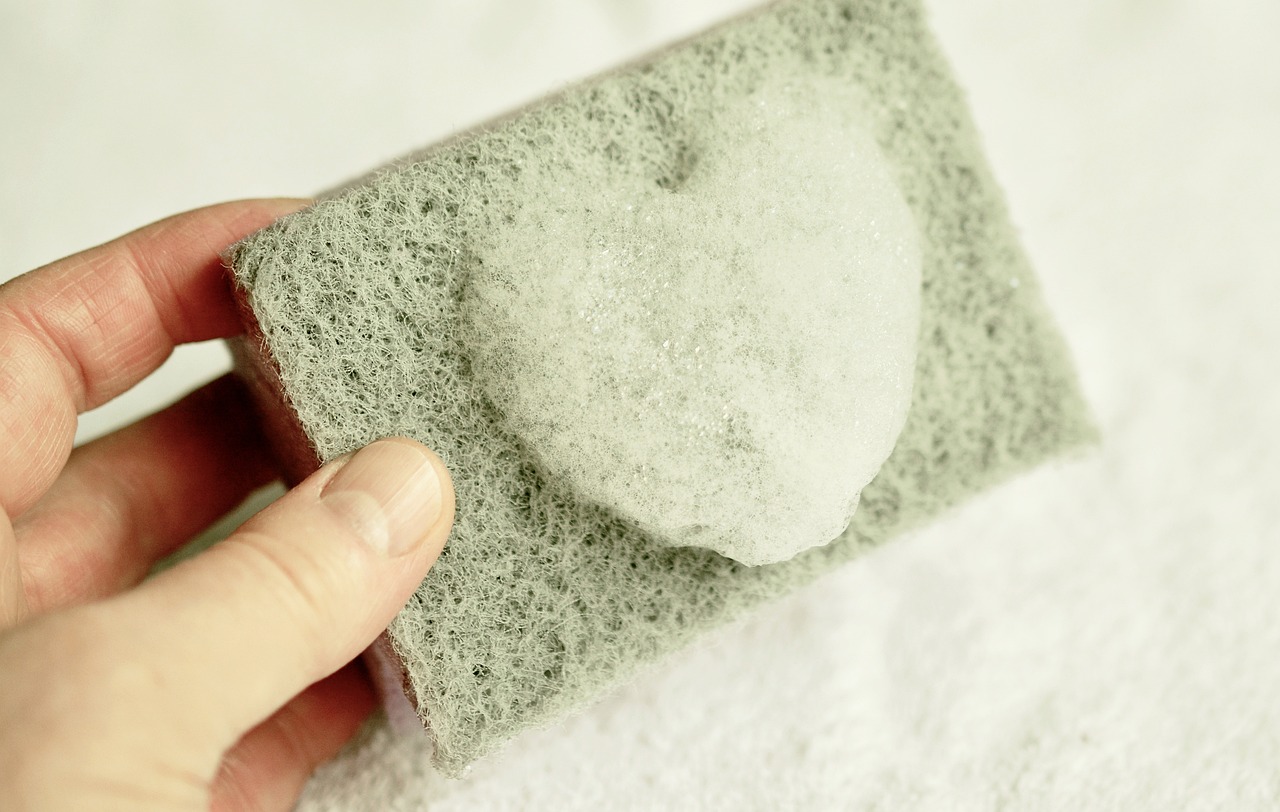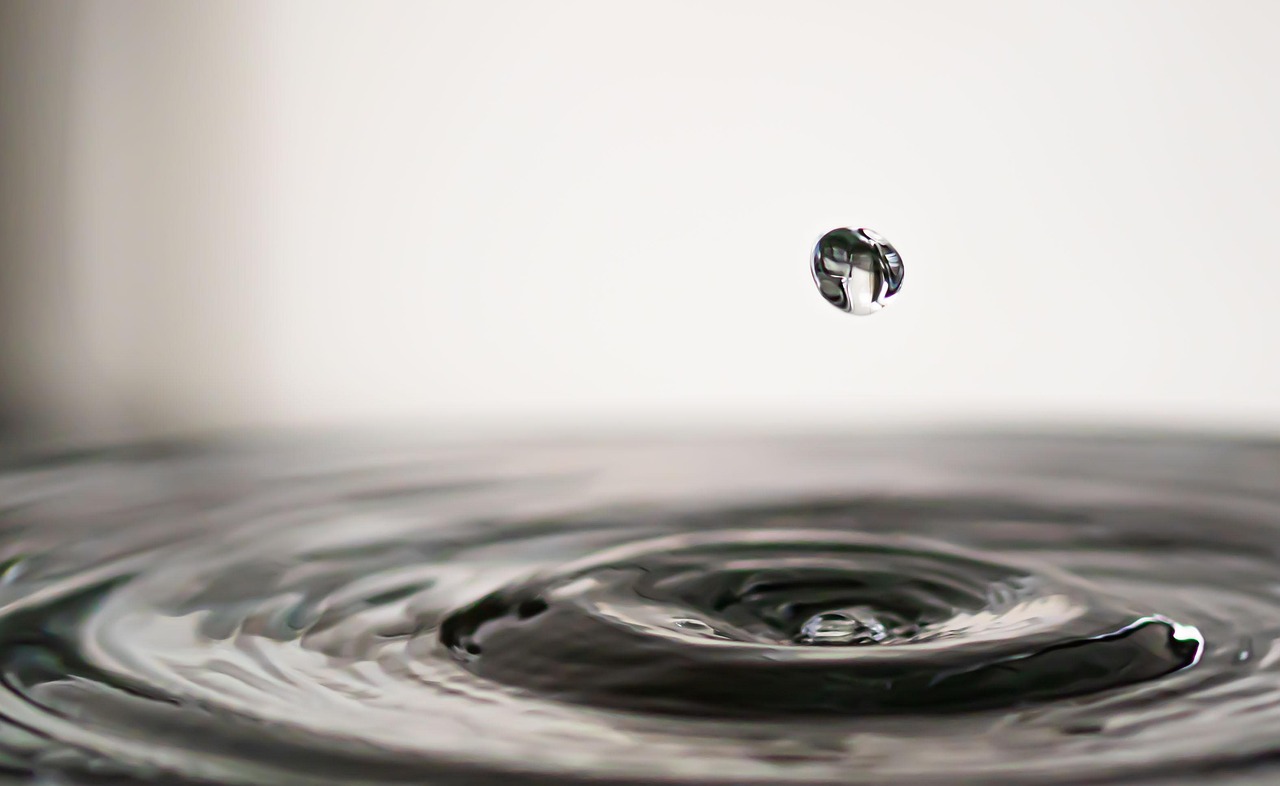This article explores effective and safe methods to remove ear wax blockages using water, addressing common concerns and providing practical insights for optimal ear health.
Understanding Ear Wax: What Is It?
Ear wax, medically known as cerumen, is a natural substance produced by glands in the ear canal. It plays a crucial role in protecting the ear by trapping dirt and debris, as well as providing lubrication. While ear wax is beneficial, excessive accumulation can lead to blockages, necessitating effective removal methods.
Common Symptoms of Ear Wax Blockage
Recognizing the symptoms of ear wax blockage is key to timely intervention. Common signs include:
- Hearing loss: A noticeable decrease in hearing ability.
- Earache: Discomfort or pain in the ear.
- Fullness sensation: A feeling of pressure in the ear.
- Tinnitus: Ringing or buzzing sounds in the ear.
Why Water is Effective for Ear Wax Removal
Water is an effective tool for ear wax removal as it can soften and dislodge hardened wax. This method is non-invasive and minimizes the risk of injury when performed correctly. By using warm water, you can create a safe environment for wax removal.
Safe Methods to Use Water for Ear Wax Removal
There are several safe methods for using water to remove ear wax, including:
- Using a bulb syringe
- Employing ear irrigation kits
- Allowing warm water to flow into the ear
Using a Bulb Syringe for Ear Cleaning
A bulb syringe is a popular tool for flushing out ear wax. It allows for controlled application of water, reducing the risk of injury to the ear canal.
Steps to Use a Bulb Syringe
1. Fill the bulb syringe with warm water.2. Tilt your head to the side with the affected ear facing down.3. Gently squeeze the bulb to release a stream of water into the ear.4. Allow the water to sit for a moment, then tilt your head to let it drain out.
Precautions When Using a Bulb Syringe
Ensure the water is at a comfortable temperature—neither too hot nor too cold. Avoid using excessive force when squeezing the bulb to prevent damage to the ear canal.
Ear Irrigation Kits: A Convenient Option
Ear irrigation kits are commercially available and provide a safe method for ear wax removal. They often come with detailed instructions for effective use.
How to Use an Ear Irrigation Kit
1. Follow the manufacturer's instructions, typically involving filling the device with warm water.2. Position the device over your ear and gently irrigate the ear canal.3. Allow the solution to flush out wax and debris.
Benefits of Ear Irrigation Kits
These kits are designed for ease of use and often include additional tools, such as ear drops, to enhance the effectiveness of wax removal.
When to Seek Professional Help
While home methods can be effective, certain situations require professional intervention. If symptoms persist or worsen, it is essential to consult a healthcare provider for safe removal.
Alternative Methods for Ear Wax Removal
Besides using water, other methods exist for ear wax removal, including over-the-counter drops and professional cleaning. It’s important to consider all options for effective treatment.
Preventing Ear Wax Build-Up
Preventative measures can help minimize ear wax build-up. Regular cleaning and avoiding cotton swabs can maintain ear health and reduce the likelihood of blockages. Additionally, consider using ear drops designed to soften wax as a proactive measure.
Prioritizing Ear Health
Maintaining ear health is essential for overall well-being. Understanding safe methods for ear wax removal and prevention can help ensure optimal ear function. Regular check-ups with a healthcare provider can also aid in monitoring ear health.

Understanding Ear Wax: What Is It?
Ear wax, also known as cerumen, is a naturally occurring substance produced by sebaceous glands in the ear canal. Its primary functions include protecting the ear from dust, debris, and microorganisms, as well as lubricating the ear canal to prevent dryness and irritation. Understanding the role of ear wax is essential for maintaining ear health and effectively managing any potential blockages that may arise.
Ear wax is composed of a mixture of secretions from the glands in the ear, along with dead skin cells and other particles. This combination forms a protective barrier that traps dirt and bacteria, preventing them from reaching the sensitive structures of the inner ear. Additionally, ear wax has natural antibacterial properties, which help to reduce the risk of infections.
While ear wax serves several beneficial purposes, it can sometimes accumulate and lead to blockages. Factors such as excessive ear wax production, improper cleaning techniques, or the use of cotton swabs can contribute to this issue. It is important to note that ear wax is usually self-cleaning; as we talk and chew, the jaw movements help to move ear wax out of the ear canal naturally.
Recognizing the symptoms of ear wax blockage is crucial for timely intervention. Common signs include:
- Hearing loss: A feeling of muffled hearing or decreased auditory perception.
- Earache: Discomfort or pain in the ear, often accompanied by a sensation of fullness.
- Tinnitus: Ringing or buzzing sounds in the ear, which can occur due to pressure from the blockage.
- Itching: A persistent urge to scratch or clean the ear canal, which may lead to further irritation.
If you experience any of these symptoms, it may indicate a buildup of ear wax that requires attention. While many people attempt to clean their ears using cotton swabs, this practice can often push wax deeper into the ear canal and exacerbate the problem.
In situations where ear wax becomes impacted, it is essential to seek safe and effective removal methods. Understanding the various options available, including the use of water, can help alleviate discomfort and restore normal hearing. Water is particularly effective because it can soften and dislodge ear wax, making it easier to remove without causing harm to the ear canal.
In summary, ear wax plays a vital role in ear health by providing protection and lubrication. However, awareness of its potential to cause blockages is important for maintaining optimal ear function. Regular monitoring and safe cleaning practices can help prevent excessive buildup and ensure that your ears remain healthy and free from complications.
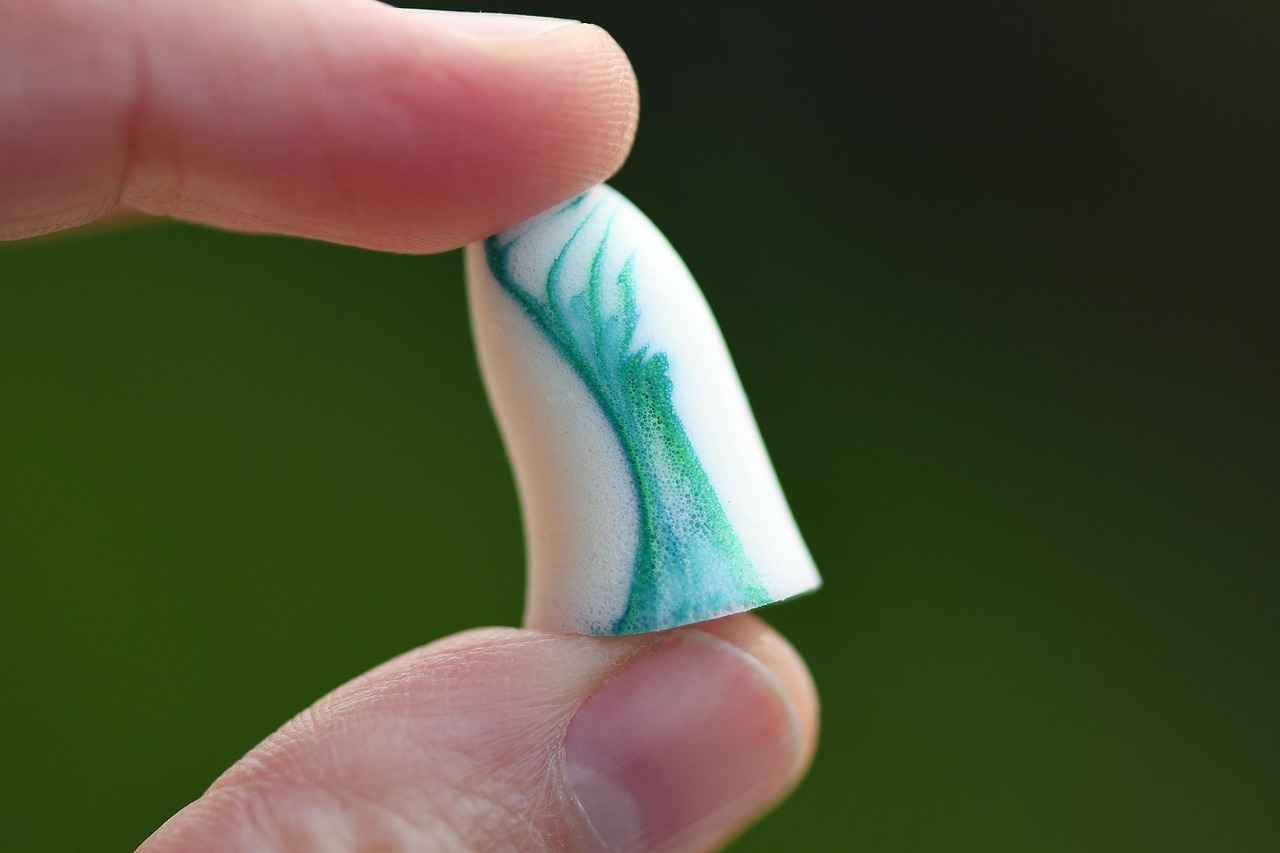
Common Symptoms of Ear Wax Blockage
Understanding the is essential for effective management and timely intervention. Ear wax, or cerumen, serves a protective role in the ear canal, but when it accumulates excessively, it can lead to various discomforts and complications. Recognizing the signs of a blockage can help individuals take appropriate action before the situation worsens.
- Hearing Loss: One of the most noticeable symptoms of ear wax blockage is a gradual or sudden decline in hearing. This occurs because the accumulated wax can obstruct sound waves from reaching the eardrum, leading to muffled hearing.
- Earache: A feeling of pain or discomfort in the ear is another common symptom. This can range from mild discomfort to severe pain, often exacerbated by movements or pressure changes.
- Feeling of Fullness: Many individuals report a sensation of fullness or pressure in the affected ear. This can feel similar to the sensation experienced during altitude changes, such as flying or driving through mountains.
- Tinnitus: Some people may experience ringing, buzzing, or hissing sounds in the ear, known as tinnitus. This can be a direct result of ear wax blocking the ear canal and affecting auditory function.
- Itching or Irritation: Blocked ears can lead to itching or irritation in the ear canal. This discomfort can be persistent and may prompt individuals to attempt to clean their ears improperly.
- Fluid Discharge: In some cases, there may be fluid discharge from the ear, which can indicate an infection or a more serious issue resulting from prolonged blockage.
It is important to note that these symptoms can also be indicative of other ear conditions, such as infections or Eustachian tube dysfunction. Therefore, if you experience any of these symptoms, it is advisable to consult a healthcare professional for an accurate diagnosis and appropriate treatment.
Moreover, individuals who wear hearing aids or have a history of ear problems may be more susceptible to ear wax blockages. Regular check-ups with a healthcare provider can help in monitoring ear health and preventing complications related to ear wax accumulation.
In summary, being aware of the symptoms of ear wax blockage is crucial for maintaining ear health. Early recognition of these signs can lead to timely interventions, preventing further complications and ensuring optimal auditory function.

Why Water is Effective for Ear Wax Removal
When it comes to maintaining ear health, understanding the role of ear wax and the methods for its safe removal is essential. Among the various techniques available, using water for ear wax removal stands out as an effective and non-invasive option. This section delves deeper into the reasons why water is particularly effective in dislodging ear wax, ensuring a safe approach to ear care.
Water Softens Ear Wax: One of the primary reasons water is effective for ear wax removal is its ability to soften cerumen. Ear wax can harden over time due to various factors such as exposure to air and the natural aging process. When warm water is introduced into the ear canal, it helps to loosen and soften the wax, making it easier to dislodge. This process reduces the effort required to remove the wax and minimizes the risk of discomfort.
Non-Invasive Method: Unlike other methods that may involve instruments or chemicals, using water is a gentle approach. This non-invasive technique significantly decreases the likelihood of injury to the delicate structures within the ear. When performed correctly, the risk of damaging the ear canal or eardrum is minimal, making it a preferred choice for many individuals.
Effective Dislodging Action: Water not only softens ear wax but also aids in its physical removal. The flow of water can help to flush out the wax from the ear canal, especially when using tools like a bulb syringe or ear irrigation kits. This method allows for a controlled application of water, ensuring that the wax is effectively removed without causing irritation.
Temperature Matters: The effectiveness of water in ear wax removal can also depend on its temperature. Using warm water is recommended, as it can enhance the softening effect on the wax. Cold water, on the other hand, may cause discomfort and can lead to a reflex action that tightens the ear muscles, making removal more difficult. Therefore, always ensure that the water is at a comfortable temperature before use.
Hydration and Ear Health: Staying hydrated is not only crucial for overall health but can also influence ear wax production. Adequate hydration helps maintain the natural consistency of ear wax, preventing it from becoming too dry or hard. This proactive approach can reduce the frequency of blockages and the need for removal methods.
Safe Practices for Water Use: While using water for ear wax removal is generally safe, it is important to follow certain precautions. Always ensure that the water used is clean and free from contaminants. Additionally, avoid using excessive force when irrigating the ear, as this can lead to discomfort or injury. If you experience pain or discomfort during the process, discontinue use immediately and consult a healthcare professional.
When to Avoid Water: Although water is an effective method for many, there are situations where it may not be advisable. If you have a history of ear infections, a perforated eardrum, or any other ear-related issues, it is crucial to seek advice from a healthcare provider before attempting to remove ear wax with water. In such cases, professional intervention may be necessary to ensure safety and effectiveness.
In summary, using water for ear wax removal offers a range of benefits, including its ability to soften and dislodge wax effectively. By understanding the mechanisms behind this method and adhering to safe practices, individuals can maintain optimal ear health while minimizing the risks associated with ear wax blockages.

Safe Methods to Use Water for Ear Wax Removal
When it comes to ear wax removal, utilizing water can be a highly effective and safe method. Many individuals experience ear wax build-up, leading to discomfort or hearing issues. Understanding the various techniques for using water to remove ear wax can empower you to take charge of your ear health. Below are several safe methods to consider:
- Bulb Syringe Method
A bulb syringe is a popular tool for ear cleaning. This method allows for controlled water application, which minimizes the risk of injury to the ear canal.
Steps to Use a Bulb Syringe: 1. Fill the bulb syringe with warm water. 2. Tilt your head to one side. 3. Gently squeeze the bulb to release water into the ear. 4. Allow the water to sit for a moment before tilting your head to drain it out.
It’s essential to ensure that the water temperature is comfortable and not too hot. Additionally, avoid using excessive force when squeezing the bulb to prevent damage to the ear canal.
Commercially available ear irrigation kits provide a convenient and effective option for ear wax removal. These kits often include specific instructions and tools designed to facilitate the process.
How to Use an Ear Irrigation Kit: 1. Follow the manufacturer's guidelines for preparation. 2. Fill the device with warm water. 3. Position the device according to the instructions. 4. Gently irrigate the ear canal to flush out the wax.
These kits usually come with additional ear drops that can enhance the effectiveness of the wax removal process.
Another simple method involves letting warm water flow into the ear. This technique can be done during a shower or while using a sink.
Steps for Warm Water Flow: 1. Tilt your head to the side. 2. Allow warm water to flow gently into the ear canal. 3. After a few moments, tilt your head in the opposite direction to let the water drain out.
This method is natural and minimizes the risk of injury, though it may not be as effective for severe blockages.
While using water for ear wax removal is generally safe, it’s crucial to be mindful of certain precautions. Always ensure that the water is at a comfortable temperature to avoid burns. If you experience pain or discomfort during any of these methods, it is advisable to stop and consult a healthcare professional.
In summary, using water for ear wax removal can be a safe and effective approach when done correctly. Whether you opt for a bulb syringe, an ear irrigation kit, or simply letting warm water flow into your ear, these methods can help maintain optimal ear health. If ear wax build-up persists or if you experience significant discomfort, seeking professional assistance is always recommended.
Using a Bulb Syringe for Ear Cleaning
When it comes to maintaining ear health, one effective method for removing ear wax is through the use of a bulb syringe. This simple yet effective tool allows for a controlled application of water, which can help to flush out excess wax from the ear canal. In this section, we will explore the benefits of using a bulb syringe, the proper steps to follow for safe use, and important precautions to keep in mind.
A bulb syringe is particularly advantageous for ear cleaning due to its design, which allows for precise control over the amount of water being applied. This minimizes the risk of injury to the ear canal, which can occur with other methods. Additionally, the bulb syringe is:
- Cost-effective: It is an inexpensive tool that can be purchased at most pharmacies.
- Easy to use: With just a bit of practice, anyone can effectively use a bulb syringe to manage ear wax.
- Non-invasive: This method does not involve any harsh chemicals or invasive procedures.
To effectively use a bulb syringe for ear cleaning, follow these steps:
- Preparation: Start by gathering your materials. You will need a bulb syringe, warm water, and a towel to catch any excess liquid.
- Fill the Syringe: Fill the bulb syringe with warm (not hot) water. Ensure the water temperature is comfortable to avoid discomfort.
- Positioning: Tilt your head to the side, with the ear you wish to clean facing upwards. This allows gravity to assist in the removal of wax.
- Application: Gently squeeze the bulb to release a small stream of water into the ear canal. Avoid forcing water into the ear, as this can cause damage.
- Let it Drain: Allow the water to sit for a few moments, then tilt your head in the opposite direction to let the water and dislodged wax drain out.
- Repeat if Necessary: You may need to repeat the process a few times for optimal results.
While using a bulb syringe is generally safe, there are some important precautions to consider:
- Water Temperature: Always ensure that the water is warm, as hot water can cause burns or discomfort.
- Gentle Pressure: Use gentle pressure when squeezing the bulb. Forcing water into the ear can lead to injury or perforation of the eardrum.
- Consult a Professional: If you have a history of ear problems or experience pain during the process, consult a healthcare provider before attempting ear cleaning at home.
In conclusion, a bulb syringe can be a valuable tool for maintaining ear health by effectively removing ear wax. By following the proper steps and taking necessary precautions, you can safely use this method to keep your ears clean and free from blockages. Remember, if you have any doubts or concerns, it’s always best to seek advice from a healthcare professional.
Steps to Use a Bulb Syringe
Using a bulb syringe is a practical and effective method for removing ear wax blockages. This technique allows for controlled application of water, which can help dislodge stubborn wax buildup without causing harm to the ear canal. Below are detailed steps and considerations to ensure safe and effective use of a bulb syringe for ear cleaning.
- Gather Your Supplies: Start by collecting all necessary items. You will need a bulb syringe, warm water, a towel, and possibly an ear basin to catch excess water.
- Prepare the Water: Fill the bulb syringe with warm water. Ensure the water is not too hot to avoid discomfort or burns. The ideal temperature is around body temperature.
- Position Yourself Comfortably: Sit or stand in a comfortable position. Tilt your head to the side with the affected ear facing downwards. This allows gravity to assist in the removal process.
- Insert the Bulb Syringe: Gently place the tip of the bulb syringe at the entrance of the ear canal without inserting it too deeply. This helps prevent any potential damage.
- Administer the Water: Squeeze the bulb gently to release a small amount of warm water into the ear. It’s important to do this slowly to avoid discomfort. You may repeat this step a few times if necessary.
- Drain the Water: Allow the water to remain in the ear for a moment to soften the wax. Then, tilt your head in the opposite direction to let the water and dislodged wax flow out. Use a towel or basin to catch the liquid.
- Dry Your Ear: After draining, gently dry the outer ear with a clean towel. Avoid inserting anything into the ear canal to prevent further blockage.
- Monitor Your Symptoms: Pay attention to how your ear feels after the procedure. If you continue to experience discomfort, hearing loss, or persistent blockage, consult a healthcare professional.
- Check Water Temperature: Always ensure the water is at a safe temperature to avoid burns.
- Avoid Forceful Squeezing: Excessive pressure can cause injury to the ear canal or eardrum. Squeeze gently and steadily.
- Consult a Doctor: If you have a history of ear problems, such as ear infections or perforated eardrums, consult a healthcare provider before attempting this method.
- Limit Frequency: Frequent use of a bulb syringe can irritate the ear canal. Use this method only as needed.
By following these steps and precautions, you can effectively use a bulb syringe for ear cleaning. This method not only helps in managing ear wax buildup but also promotes better ear health. Always prioritize safety and seek professional help if you are uncertain about the process or if symptoms persist.
Precautions When Using a Bulb Syringe
When considering the use of a bulb syringe for ear cleaning, it is essential to observe certain precautions to ensure safety and effectiveness. This method can be beneficial for removing ear wax; however, improper use can lead to discomfort or injury.
- Temperature of Water: Always ensure that the water used in the bulb syringe is at a comfortable temperature. Water that is too hot can potentially cause burns to the sensitive skin within the ear canal, while water that is too cold may induce dizziness or discomfort. Aim for lukewarm water to create a soothing experience.
- Gentle Pressure: When squeezing the bulb, apply gentle pressure to avoid excessive force. Using too much force can lead to trauma in the ear canal, which may result in pain or even perforation of the eardrum. A controlled squeeze is sufficient to allow the water to flow gently into the ear.
- Positioning: Tilt your head to the side when using the bulb syringe. This positioning allows gravity to assist in the removal of ear wax. It is advisable to have a towel or basin ready to catch any excess water and debris that may flow out.
- Frequency of Use: Limit the use of the bulb syringe to occasional cleaning. Frequent use can irritate the ear canal and lead to inflammation or infection. If you find yourself needing to use the syringe regularly, it may be a sign of an underlying issue that requires professional evaluation.
- Consult a Professional: If you experience pain, persistent blockage, or any unusual symptoms, it is important to seek professional medical advice. Self-treatment is not always appropriate, and a healthcare provider can offer safer and more effective alternatives.
By following these precautions, you can effectively use a bulb syringe for ear cleaning while minimizing the risk of complications. Remember, maintaining ear health is crucial, and understanding the proper techniques for wax removal can enhance your overall well-being.
In summary, using a bulb syringe for ear wax removal can be a safe and effective method when done correctly. Always prioritize your comfort and safety by adhering to the guidelines mentioned above. If in doubt, do not hesitate to consult a healthcare professional for guidance.
Ear Irrigation Kits: A Convenient Option
Ear irrigation kits have become increasingly popular as a convenient and effective solution for ear wax removal. These kits are designed to offer a safe method for individuals looking to manage ear wax build-up at home. With the right tools and instructions, users can perform ear cleaning procedures with confidence.
One of the primary advantages of ear irrigation kits is their user-friendly design. Most kits include detailed instructions that guide users through the process, making it accessible even for those who may be unfamiliar with ear care. Typically, these kits come with a bulb syringe or a specialized irrigation device that allows for controlled water flow into the ear canal, ensuring safety and effectiveness.
When using an ear irrigation kit, it is essential to follow the manufacturer’s guidelines carefully. This usually involves:
- Filling the device with warm water or a saline solution.
- Positioning yourself comfortably to allow gravity to assist in the process.
- Gently irrigating the ear canal, which helps to soften and dislodge ear wax.
Many kits also include additional products such as ear drops to help break down wax before the irrigation process. These drops can enhance the effectiveness of the irrigation, making it easier to clear blockages. It’s important to note that using warm water is crucial, as hot or cold water can cause discomfort or dizziness.
Moreover, ear irrigation kits are often designed with safety features that minimize the risk of damage to the ear. For instance, many kits come with pressure control mechanisms to ensure that water is not forced into the ear too quickly or forcefully. This is especially important for individuals who may have sensitive ears or pre-existing conditions.
Another benefit of using ear irrigation kits is their affordability and availability. Most kits can be purchased at local pharmacies or online, making them accessible for anyone seeking to maintain their ear health. Additionally, they provide a cost-effective alternative to professional ear cleaning, which can be expensive and time-consuming.
However, it’s essential to recognize that while ear irrigation kits are safe for many people, they may not be suitable for everyone. Individuals with certain medical conditions, such as ear infections, perforated eardrums, or other ear-related issues, should consult a healthcare professional before attempting to use these kits. It’s always better to err on the side of caution when it comes to ear health.
In summary, ear irrigation kits offer a convenient and effective option for managing ear wax build-up. With their user-friendly design, additional products for enhanced effectiveness, and safety features, they provide a practical solution for those looking to maintain their ear health at home. As with any health-related procedure, it is essential to follow instructions carefully and consult a professional if there are any concerns.
How to Use an Ear Irrigation Kit
When it comes to maintaining optimal ear health, ear irrigation kits provide a reliable and effective method for removing ear wax. These kits are designed to facilitate the safe flushing of wax buildup, allowing for a comfortable and straightforward experience. Below, we will delve into the detailed steps and considerations for using an ear irrigation kit effectively.
Using an ear irrigation kit is a simple process, but it is essential to follow the manufacturer’s instructions carefully to ensure safety and effectiveness. Here’s a step-by-step guide:
- Gather Your Supplies: Make sure you have your ear irrigation kit, warm water, and a towel handy. It’s also a good idea to have a mirror for better visibility.
- Prepare the Water: Fill the irrigation device with warm water. The water should be comfortable to the touch, as water that is too hot or too cold can cause discomfort.
- Position Yourself: Tilt your head to the side over a sink or basin. This position allows the water to flow effectively into the ear canal.
- Insert the Tip: Gently place the tip of the irrigation device at the entrance of your ear canal. Ensure it is secure without pushing it too deeply.
- Irrigate the Ear: Squeeze the bulb or press the button on the device to release the warm water into your ear. Do this gently to avoid discomfort.
- Allow the Water to Drain: After irrigating, allow the water to drain out of your ear. You may need to tilt your head further to facilitate this process.
- Dry Your Ear: Use a towel to gently dry the outer ear. You can also let your ear air dry for a short period.
Ear irrigation kits offer several advantages:
- Controlled Process: These kits allow for a controlled application of water, reducing the risk of injury.
- Ease of Use: Many kits come with clear instructions, making them accessible for individuals without medical training.
- Safe and Effective: When used correctly, ear irrigation is a safe method for removing wax and can help alleviate symptoms associated with blockages.
While ear irrigation kits are generally safe, it is crucial to take certain precautions:
- Consult a Professional: If you have a history of ear problems or are unsure about the process, consult a healthcare provider before attempting ear irrigation.
- Avoid Excessive Force: Do not apply excessive pressure when irrigating your ear, as this can lead to injury.
- Monitor for Discomfort: If you experience pain or discomfort during the process, stop immediately and consult a professional.
By following these steps and precautions, you can effectively use an ear irrigation kit to maintain your ear health. Remember, while home methods can be beneficial, it is always wise to seek professional advice if symptoms persist or worsen.
Benefits of Ear Irrigation Kits
Ear irrigation kits are increasingly popular for individuals seeking a safe and effective way to manage ear wax build-up. These kits are designed with user convenience in mind, making them an attractive option for home ear care. Below, we explore the numerous benefits of using ear irrigation kits for ear wax removal.
- Ease of Use: One of the primary advantages of ear irrigation kits is their straightforward design. Most kits come with clear instructions, allowing users to perform the procedure without professional assistance. This ease of use is particularly beneficial for those who might feel anxious about visiting a healthcare provider.
- Comprehensive Tools: Many ear irrigation kits include additional tools, such as ear drops or softening agents. These products enhance the effectiveness of wax removal by softening the ear wax before irrigation, making it easier to flush out. This dual approach can lead to a more thorough cleaning process.
- Controlled Application: Unlike some home remedies, ear irrigation kits allow for controlled application of water or saline solution. This reduces the risk of injury to the ear canal and ensures that the user can manage the pressure and flow of the liquid, promoting a safer experience.
- Cost-Effective: Investing in an ear irrigation kit can be more cost-effective than multiple visits to a healthcare provider for ear cleaning. Once purchased, these kits can be used multiple times, providing a long-term solution for ear wax management.
- Safe for Home Use: When used according to the manufacturer’s instructions, ear irrigation kits are generally safe for home use. They are designed to minimize the risk of complications associated with improper ear cleaning techniques, such as using cotton swabs or other objects that can push wax deeper into the ear.
- Enhanced Comfort: Many users report that ear irrigation is a comfortable process when performed correctly. The gentle flow of water can provide relief from the discomfort associated with ear wax build-up, making it a more pleasant alternative to other methods.
Incorporating an ear irrigation kit into your ear care routine can lead to improved ear health. It is essential to follow the guidelines provided with the kit to ensure safe and effective use. For individuals who frequently experience ear wax build-up, these kits can serve as a reliable and efficient solution.
While ear irrigation kits offer several benefits, it’s important to remember that they may not be suitable for everyone. Individuals with certain ear conditions, such as perforated eardrums or infections, should consult a healthcare professional before using these kits. Always prioritize safety and seek professional advice if you have any concerns regarding your ear health.
In conclusion, ear irrigation kits represent a practical option for managing ear wax build-up at home. Their ease of use, comprehensive tools, and cost-effectiveness make them a valuable addition to personal care routines. By understanding how to use these kits properly, individuals can maintain optimal ear health and enjoy the benefits of clear, comfortable ears.
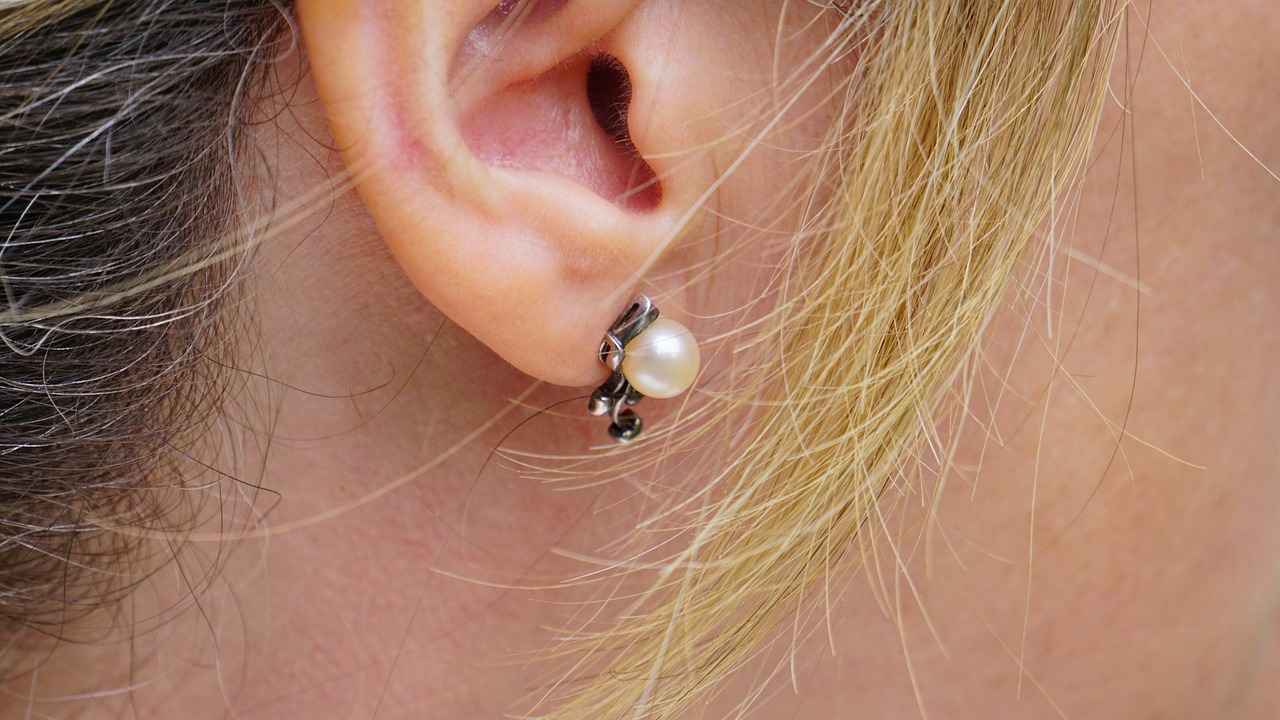
When to Seek Professional Help
When it comes to ear health, understanding when to seek professional help is crucial. Many individuals often attempt to manage ear wax blockages at home, using various methods that may include warm water, bulb syringes, or ear irrigation kits. While these methods can be effective for some, there are specific situations where professional intervention is not only recommended but necessary for safety and effectiveness.
Recognizing the Signs
It is essential to be aware of the symptoms that indicate a more serious issue. Common signs that suggest you should consult a healthcare provider include:
- Severe Ear Pain: If you experience intense pain that does not improve, it may indicate an underlying condition.
- Persistent Hearing Loss: A noticeable decline in hearing, especially if it lasts more than a few days, warrants medical attention.
- Fluid Discharge: Any fluid leaking from the ear, particularly if it is accompanied by a foul odor, could signal an infection.
- Ringing in the Ears: Tinnitus, or ringing, can sometimes be a symptom of wax buildup or other ear issues.
Why Professional Help is Important
Seeking professional help ensures that any treatment is safe and effective. Healthcare providers have the necessary tools and expertise to assess the situation accurately. They can determine whether the blockage is due to ear wax, an infection, or another issue that may require different treatment. Attempting to remove ear wax improperly can lead to serious complications, including:
- Injury to the Ear Canal: Using sharp objects or excessive force can damage the sensitive skin in the ear canal.
- Perforated Eardrum: Improper techniques can result in a punctured eardrum, leading to pain and potential hearing loss.
- Infections: If ear wax is pushed deeper into the ear, it can lead to blockages that trap bacteria, resulting in infections.
Safe Removal Techniques
Healthcare providers may use various techniques to safely remove ear wax. These methods include:
- Manual Removal: A healthcare professional may use specialized tools to gently extract the wax.
- Ear Irrigation: This method involves flushing the ear with water or saline to dislodge the wax safely.
- Microsuction: This technique uses a small suction device to remove ear wax without causing damage.
Conclusion
In summary, while home methods for ear wax removal can be effective, it is vital to recognize when to seek professional help. If symptoms persist or worsen, do not hesitate to consult a healthcare provider. Your ear health is paramount, and ensuring safe removal of ear wax is essential for maintaining optimal hearing and preventing complications.
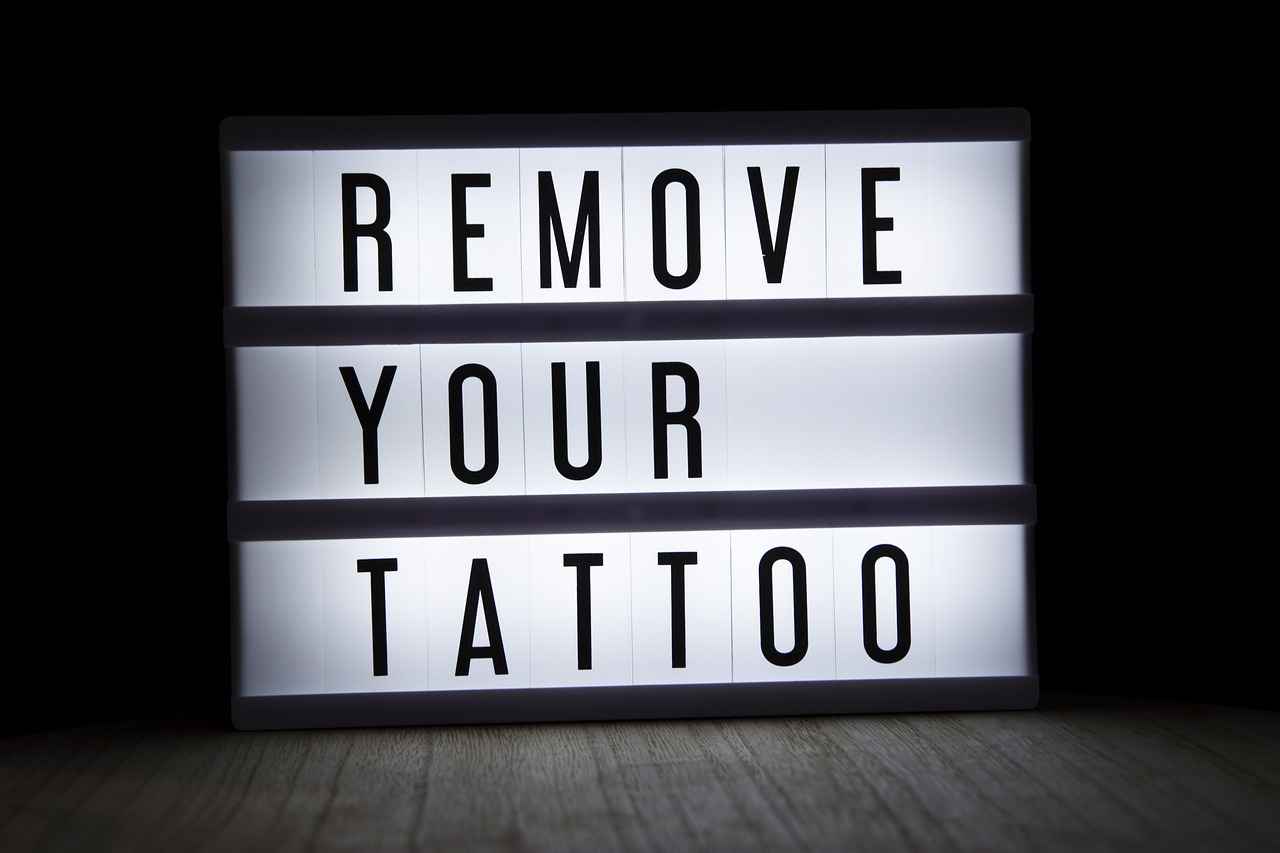
Alternative Methods for Ear Wax Removal
When it comes to ear wax removal, many individuals may first think of using water as a primary method. However, there are several alternative methods available that can also be effective in managing ear wax build-up. These alternatives include over-the-counter drops, professional cleaning services, and natural remedies, each offering unique benefits and considerations.
Over-the-Counter Drops
One of the most popular alternatives is the use of over-the-counter ear drops. These products are specifically designed to soften ear wax, making it easier to remove. Most drops contain ingredients like carbamide peroxide or mineral oil, which help to break down the wax. To use these drops:
- Follow the instructions on the packaging carefully.
- Lie on your side with the affected ear facing up.
- Administer the recommended number of drops into the ear canal.
- Remain in this position for the time specified to allow the drops to work.
Afterward, you can gently flush the ear with warm water or use a bulb syringe to help remove any loosened wax.
Professional Cleaning Services
If home methods do not yield satisfactory results, seeking professional cleaning may be the best course of action. Ear, nose, and throat (ENT) specialists can perform a thorough cleaning using specialized tools and techniques. This method is particularly recommended for individuals with:
- Severe blockage
- History of ear infections
- Other underlying health conditions affecting ear health
During a professional cleaning session, the doctor may use suction devices or a curette to safely remove wax without damaging the ear canal.
Natural Remedies
For those who prefer a more holistic approach, several natural remedies can be effective for ear wax removal. These include:
- Olive Oil: A few drops of warm olive oil can help soften ear wax.
- Hydrogen Peroxide: A diluted solution can be used similarly to commercial drops.
- Glycerin: This can also be effective in softening wax.
When using natural remedies, it’s important to ensure that the solutions are at body temperature and to avoid using them if you have a perforated eardrum or any signs of infection.
Considerations and Precautions
While these alternatives can be effective, it’s crucial to approach ear wax removal with caution. Avoid using cotton swabs, as they can push wax further into the ear canal, potentially causing blockages or injury. Additionally, if you experience symptoms such as pain, bleeding, or persistent hearing loss, it’s essential to consult a healthcare provider.
In summary, while water is a common method for ear wax removal, exploring alternative methods such as over-the-counter drops, professional cleaning, and natural remedies can provide effective solutions. Always prioritize safety and consult a professional when in doubt to ensure optimal ear health.

Preventing Ear Wax Build-Up
is crucial for maintaining optimal ear health and function. Ear wax, or cerumen, plays an important role in protecting the ear canal from dust, debris, and microorganisms. However, excessive build-up can lead to discomfort, hearing loss, and even infections. Here, we will explore effective strategies to minimize ear wax accumulation and promote healthy ears.
- Regular Cleaning: Keeping the outer ear clean is essential. Use a soft cloth to wipe the outer ear gently. Avoid inserting objects into the ear canal, as this can push wax deeper and lead to blockages.
- Avoid Cotton Swabs: While cotton swabs may seem like a convenient tool for cleaning ears, they can actually do more harm than good. They often push wax further into the ear canal, increasing the risk of build-up and impaction.
- Use Ear Drops: Over-the-counter ear drops can help soften ear wax and facilitate its natural expulsion. Look for products containing hydrogen peroxide or carbamide peroxide, which are effective in breaking down wax.
- Stay Hydrated: Maintaining proper hydration can help your body produce a healthy amount of ear wax. Dehydration can lead to dry wax, which may become hard and difficult to remove.
- Limit Ear Plug Use: Frequent use of ear plugs or hearing aids can trap moisture and wax in the ear canal. If you must use them, ensure they are clean and allow your ears to breathe periodically.
- Regular Check-Ups: Schedule regular visits with a healthcare professional for ear examinations. They can assess your ear health and provide professional cleaning if necessary.
Understanding Your Ear Health: It’s essential to recognize that everyone’s ear wax production varies. Some individuals naturally produce more wax than others, making it crucial to tailor your ear care routine to your specific needs. If you notice symptoms such as hearing loss, earache, or a feeling of fullness, consult a healthcare provider for advice.
Safe Practices for Ear Care: When cleaning your ears, always prioritize safety. Avoid using sharp objects or inserting anything into the ear canal. If you feel unsure about how to manage ear wax build-up, seek guidance from a healthcare professional. They can provide personalized recommendations based on your ear health history.
Conclusion: By adopting these preventative measures, you can effectively minimize ear wax build-up and maintain good ear health. Regular cleaning, avoiding harmful practices, and seeking professional help when needed can ensure that your ears function optimally and remain free from discomfort.

Conclusion: Prioritizing Ear Health
Prioritizing ear health is crucial for maintaining overall well-being. The ears play a significant role in our daily lives, from communication to balance. Therefore, understanding the best practices for ear care, including safe methods for ear wax removal, is essential for ensuring optimal ear function.
Ear wax, known as cerumen, is a natural substance produced by glands in the ear canal. Its primary function is to protect the ear from dust, debris, and microorganisms, while also lubricating the ear canal. However, excessive ear wax can lead to blockages, which may cause discomfort, hearing loss, or even infections.
It is vital to recognize the symptoms of ear wax blockage early on. Common signs include:
- Hearing Loss: A noticeable reduction in hearing ability may occur.
- Earache: Discomfort or pain in the ear can indicate a blockage.
- Fullness in the Ear: A sensation of pressure or fullness may be felt.
Using water for ear wax removal is an effective and non-invasive technique. Water can soften ear wax, making it easier to dislodge. This method minimizes the risk of injury when performed correctly, as it does not involve sharp instruments or excessive force.
Several methods can be employed to safely use water for ear wax removal:
- Bulb Syringe: A bulb syringe allows for controlled application of water into the ear.
- Ear Irrigation Kits: These kits are designed for safe and effective ear cleaning.
- Warm Water Flushing: Simply letting warm water flow into the ear can help dislodge wax.
A bulb syringe can be a practical tool for ear cleaning. Here’s how to use it:
1. Fill the bulb syringe with warm water.2. Tilt your head to one side.3. Gently squeeze the bulb to release water into the ear.4. Allow the water to sit for a moment, then tilt your head to let it drain out.
Ensure the water temperature is comfortable and avoid using excessive force to prevent damage to the ear canal.
Ear irrigation kits are available commercially and offer a user-friendly approach to ear wax removal. These kits typically come with:
- Instructions: Clear guidelines for safe use.
- Additional Tools: Some kits include ear drops to enhance wax removal.
While home remedies can be effective, certain situations warrant professional help. If symptoms persist or worsen, it is crucial to consult a healthcare provider. They can safely remove ear wax and address any underlying issues.
In addition to water-based methods, there are other options for ear wax removal:
- Over-the-Counter Drops: These can help soften ear wax for easier removal.
- Professional Cleaning: Audiologists and ENT specialists can provide thorough cleaning services.
To maintain ear health and prevent wax build-up, consider the following tips:
- Avoid Cotton Swabs: These can push wax deeper into the ear canal.
- Regular Cleaning: Gently clean the outer ear with a damp cloth.
- Stay Hydrated: Proper hydration can help keep ear wax at optimal levels.
In summary, maintaining ear health is essential for overall well-being. By understanding safe methods for ear wax removal and prevention, individuals can help ensure optimal ear function and avoid complications associated with wax build-up.
Frequently Asked Questions
- What causes ear wax blockage?
Ear wax blockage typically occurs when too much wax accumulates in the ear canal. This can happen due to factors like using cotton swabs, wearing hearing aids, or having naturally narrow ear canals.
- Is it safe to use water to remove ear wax?
Yes, using water can be a safe method to remove ear wax when done correctly. It helps soften the wax, making it easier to dislodge. However, it’s essential to follow proper techniques to avoid injury.
- How often should I clean my ears?
Most people don’t need to clean their ears regularly, as the ear canal is self-cleaning. However, if you notice symptoms of blockage, such as hearing loss or discomfort, it may be time to take action.
- When should I see a doctor for ear wax removal?
If home remedies don’t alleviate your symptoms, or if you experience pain, bleeding, or persistent hearing loss, it’s best to consult a healthcare professional for safe and effective removal.
- Can I prevent ear wax build-up?
Yes! To prevent ear wax build-up, avoid inserting objects into your ears, clean the outer ear with a damp cloth, and consider using ear drops designed to soften wax as a preventive measure.
